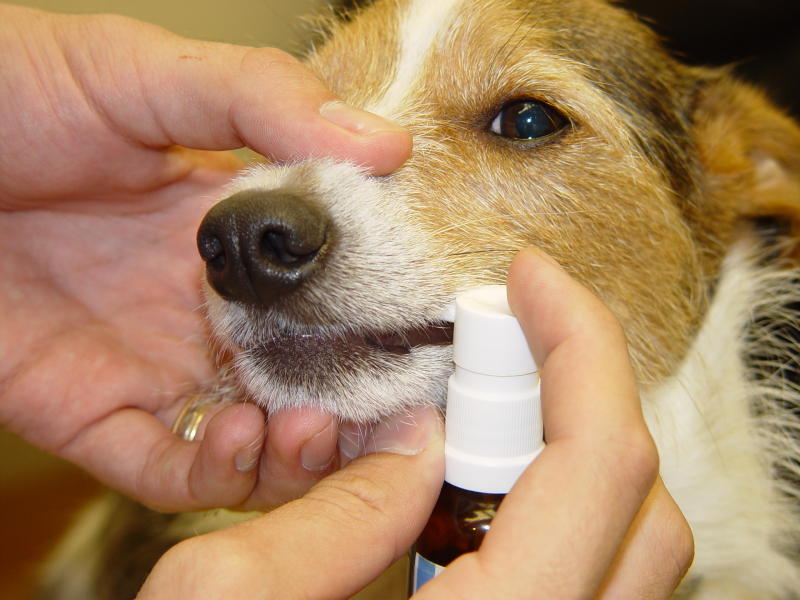
In dogs, allergies to house dust, pollen, and mold cause atopic dermatitis, an itchy skin inflammation. Dogs, like people, can be desensitized through “immunotherapy” using shots or drops that deliver small doses of the allergen to “train” the immune system to tolerate foreign proteins.
Both technologies are now about a century old, but for humans and animals, allergy shots are more commonly used.
Chief author of the new study, Douglas DeBoer, a professor of dermatology at the University of Wisconsin-Madison School of Veterinary Medicine, sees several benefits emerging from the new study, which treated skin allergies in 217 dogs using allergy drops.
About 60 percent of the dogs improved significantly, DeBoer says. The drops were placed under the tongue twice a day, while allergy shots are injected every 14 days or so. Both drops and shots must be performed under a veterinarian’s supervision, and their cost is comparable.
Because the drops apparently act through a different mechanism than allergy shots, they even helped dogs who had “failed” allergy shots, DeBoer says.
Dogs, like people, can rarely suffer a life-threatening anaphylactic reaction to allergy shots, resulting in collapse and shock. However, even those dogs treated in the study that had previously had such a dangerous reaction to an allergy shot did not have it with the under-the-tongue method. “Drops appear to be safer than shots in this respect,” says DeBoer.
DeBoer was not always so enthusiastic about allergy drops for dogs, says Mary Morris, M.D., of Allergy Associates of La Crosse. In about 1967, her father, Dr. David Morris, started using allergy drops with increasing effect on his allergy patients. Some were farmers with severe mold allergies who suffered aching arms and swelling from allergy shots or could not find the time to visit the clinic for regular shots.
In 2006, Morris says, a clinic employee asked her to try allergy drops on a “poor little golden retriever that was losing most of its coat, scratching uncontrollably. Based on the human protocol we use at the clinic, I made my best guess at the formula for treating a dog, and it worked really well.”
Intrigued with the idea of a rigorous study for the treatment on dogs, she searched for an expert in canine skin allergies and DeBoer’s name was at the top of the list. He seemed a natural fit — a world expert in the area who worked at University of Wisconsin-Madison, where both she and her father had gone to medical school.
Unfortunately, DeBoer “was extremely skeptical, and he basically told me no,” she says. “I was very disappointed, and kept trying to persuade him this was a good research project.” The two agreed on a pilot study of 10 dogs. “If it failed, it wasn’t worth pursuing,” she says. “But I think much to his surprise, it actually worked.”
The outcome, Morris says, “was the study he is going to present in Vancouver.”
Morris has licensed the technology to Heska Corp., whose CEO, Robert Grieve, is a former professor at the School of Veterinary Medicine.
With data in hand, DeBoer has overcome his skepticism. Although the drops must be given once or twice a day for at least several months, they have major advantages, he says. “A lot of owners are needle-shy, and would never consider giving allergy shots, and may not even have the dog evaluated for that reason. Now there is an option that is very user-friendly.”
And what do the dogs think? “The drops have a slightly sweet flavor, so most dogs actually like them,” says DeBoer. “Owners say their dogs consider them a treat and run toward them when they hear the bottle being opened. With the needle, they learn to run away.”
